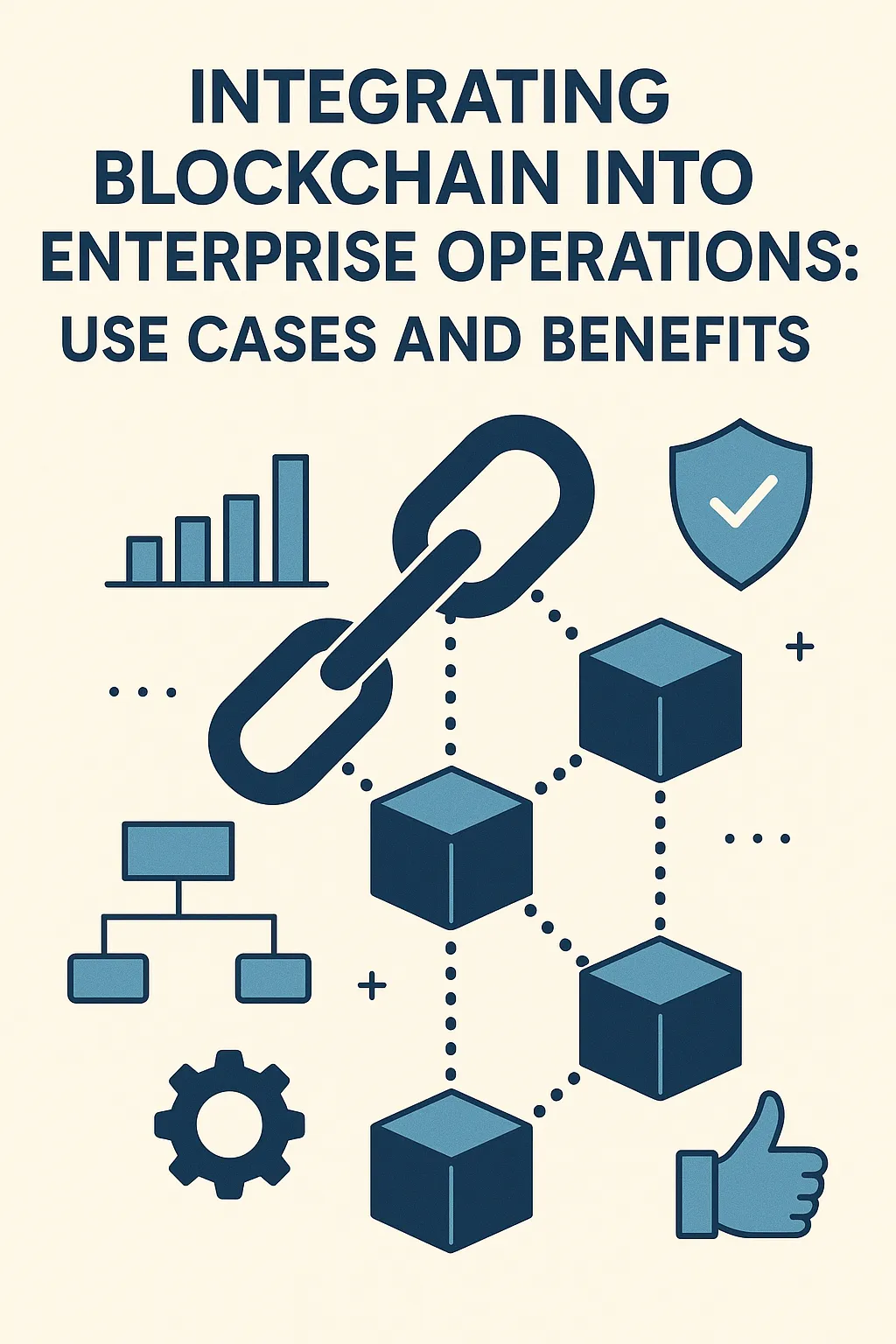How Blockchain Technology is Transforming Business Operations
Published on: May 15, 2025 |
Category: Bizinfotech

Introduction to Blockchain Technology
- Blockchain is a distributed ledger technology that records transactions across multiple computers in a secure, transparent, and tamper-proof manner.
- Unlike traditional databases, a blockchain is decentralized. Every block contains a list of transactions and is linked to the previous block through cryptographic hashes.
- It is immutable, meaning once data is written into the blockchain, it cannot be altered or deleted, which ensures integrity.
- Blockchain was first introduced as the underlying technology for Bitcoin in 2009, but its potential has since expanded to a broad range of industries and applications beyond cryptocurrency.
Key Features of Blockchain
- Decentralization
No single entity has control over the entire network. All participants have access to the same data.
- Transparency
All transactions are visible to all network participants, increasing trust and accountability.
- Immutability
Once data is recorded, it cannot be changed, which prevents fraud and unauthorized tampering.
- Security
Advanced cryptographic algorithms ensure high-level data protection and authentication.
Applications of Blockchain in Business Operations
1. Supply Chain Management
- Real-time tracking: Blockchain allows companies to track the movement of goods from origin to delivery, enhancing visibility.
- Elimination of fraud: It ensures authenticity and prevents counterfeit products.
- Efficiency: Reduces paperwork, manual data entry, and the risk of human error.
2. Financial Transactions
- Faster payments: Peer-to-peer transactions on the blockchain reduce reliance on intermediaries like banks.
- Reduced transaction fees: Blockchain minimizes overhead costs for both domestic and cross-border payments.
- Smart contracts: These are self-executing contracts with predefined rules that automatically complete transactions once conditions are met.
3. Identity Verification
- Secure ID management: Blockchain can be used to create a verifiable digital identity that reduces the risk of identity theft.
- Access control: Businesses can control who accesses sensitive data or facilities through blockchain-based ID systems.
4. Human Resources
- Credential verification: Blockchain enables HR to validate academic and professional credentials quickly.
- Payroll automation: Smart contracts can automate payroll distribution based on real-time attendance and work hours.
5. Healthcare and Data Management
- Medical record sharing: Blockchain allows patients and doctors to access up-to-date health records securely.
- Data interoperability: Different healthcare providers can share patient data without compromising privacy.
Advantages of Using Blockchain in Business
- Enhanced Efficiency
Reduces time-consuming manual processes and reconciliations.
- Improved Data Integrity
Once data is stored, it cannot be changed or deleted, ensuring audit-ready records.
- Greater Trust Among Stakeholders
Blockchain builds a reliable and consistent data-sharing ecosystem for all business partners.
- Cost Savings
Eliminates intermediaries and reduces fraud-related losses.
Challenges in Blockchain Adoption
- Scalability issues: Some blockchain networks struggle with handling large volumes of transactions quickly.
- Regulatory uncertainty: There is a lack of clear regulatory frameworks in many countries regarding blockchain use.
- High energy consumption: Proof-of-work consensus mechanisms used by many blockchains require substantial computational power.
- Integration with legacy systems: Businesses may face difficulties integrating blockchain with their current infrastructure.
Industries Leading Blockchain Adoption
- Finance: Banks and fintech startups are leveraging blockchain for secure, real-time transactions.
- Retail and E-commerce: Used for tracking inventory, verifying product origin, and processing crypto payments.
- Healthcare: Enables secure data sharing and access to electronic medical records.
- Real Estate: Smart contracts simplify the buying and selling of properties.
- Logistics: Enhances transparency and reduces delays in global supply chains.
Case Studies
Walmart – Blockchain for Food Safety
- Walmart has implemented blockchain to trace the origin of food products.
- They reduced the time needed to trace the origin of mangoes from 7 days to just 2.2 seconds.
Maersk – Global Shipping Blockchain
- Partnered with IBM to create TradeLens, a blockchain-based shipping platform.
- Improves the visibility of cargo movements and reduces paperwork delays.
De Beers – Tracking Diamonds
- Uses blockchain to verify the authenticity and ethical sourcing of diamonds.
- Ensures conflict-free supply and increases buyer confidence.
How Businesses Can Get Started with Blockchain
- Identify the Problem: Focus on specific pain points like fraud prevention or transaction delays.
- Explore Blockchain Platforms: Ethereum, Hyperledger, and Corda are popular options for enterprise use.
- Pilot a Project: Start with a small-scale prototype to test feasibility and ROI.
- Ensure Regulatory Compliance: Work with legal teams to ensure your use of blockchain aligns with regional laws.
- Build a Cross-functional Team: Involve IT, legal, operations, and business strategists.
Conclusion
- Blockchain technology is redefining how businesses handle transactions, share data, and build trust with customers and partners.
- Although there are hurdles in adoption, the benefits far outweigh the challenges for forward-thinking enterprises.
- As technology matures, businesses that adopt blockchain now will have a strategic edge in the data-driven, decentralized economy of tomorrow.
Author: Md Amir Sohail
